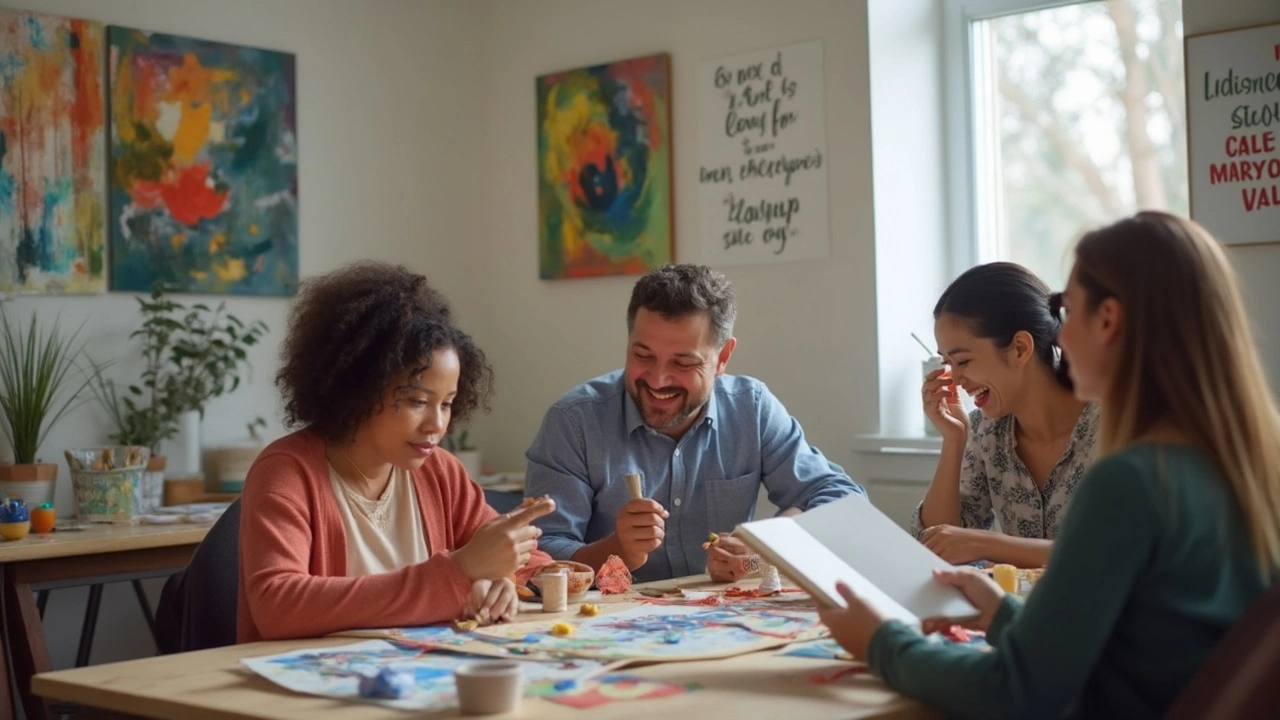Healing Through Art: Simple Ways to Boost Your Health
Ever notice how doodling on a napkin can calm you down after a stressful day? That’s not magic – it’s your brain responding to creative play. When you draw, paint, or even color, you give yourself a break from worries, and that break can lower stress hormones and lift mood. In this guide you’ll get easy ideas you can start right now, no fancy supplies needed.
Why Art Feels Good
Creating something activates the same reward centers that fire when you eat good food or finish a workout. The act of moving a pen or brush releases dopamine, the feel‑good chemical. At the same time, focusing on colors or shapes distracts the mind from negative thoughts, which can ease anxiety and even reduce pain perception. Studies have shown patients who engage in art therapy report less fatigue and better sleep, so the benefits are real, not just feel‑good talk.
Easy Art Habits for Daily Life
1. Mini doodle breaks – Keep a small notebook at your desk. When you feel tension building, spend two minutes sketching whatever comes to mind. No need for perfect lines; just let your hand move.
2. Colorful mood journal – Instead of writing about your day, use colored pencils to shade your emotions. Red for anger, blue for calm, yellow for joy. The visual cue helps you see patterns and process feelings faster.
3. Paint with everyday items – Grab a toothbrush, a q‑tip, or a kitchen sponge and turn them into painting tools. The different textures make the experience playful and keep you from over‑thinking.
4. Guided online sessions – There are free YouTube videos that walk you through simple water‑color or charcoal exercises. Follow along for a structured session that still feels relaxed.
5. Group art moments – Invite a friend or family member to create side‑by‑side. Sharing the process builds connection and makes the activity feel less like a chore.
Pick one habit and try it for a week. Notice how your stress level changes, how sleep improves, or how your mind feels clearer. If you enjoy the results, mix in another habit and keep the momentum going.
Remember, the goal isn’t to become an artist; it’s to use art as a tool for healing. A few minutes a day can add up to big mental‑health gains over time. So grab a pen, a crayon, or whatever you have handy, and start feeling better through creativity today.
-
How Art Therapy Helps Alcohol Dependence Recovery: Creative Approaches That Work
Art unlocks a different kind of healing for people recovering from alcohol dependence, offering more than traditional therapy. This article shows how creativity paves new paths for self-expression, emotional release, and personal triumph over addiction. You'll find inspiring stories, practical art ideas for recovery, and real tips to make creativity work for anyone battling alcohol problems. Explore the science, hear from those who've tried it, and discover just how powerful a paintbrush or a lump of clay can be on the journey to sobriety.
